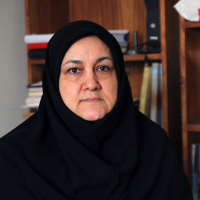Social Characteristics of Iranian Modernist Painters
Author(s):
Abstract:
The aim of this article is to show social characteristics of modernist painters in Iran. The main question is whether or not a stable pattern can be reached in order to show the effects of social factors on people to become artists. In order to find the answer, it is necessary to introduce social characteristics of Iranian modernist painters. This article is theoretically related to the field of sociology of art and it emphasizes on artists. Janet Wolff's theoretical framework is used in relation to characteristics of artists. Wolff believes that becoming an artist is a social process and different social factors affect that. She indicates the role of certain factors such as institutions, social groups and classes, etc. in this process. The main point in Wolff's discussions, which is also central to this study, is the idea that becoming an artist is a process which follows different social and economic conditions, and which suitability or non-suitability of these conditions can bring either order or disorder to that. These conditions may even prevent the process from happening. She points to family, class and educational conditions in order to explain the situation. The research method is a survey based on questionnaire which is filled through interview with artists. In accordance with Janet Wollff's theory, the author emphasizes here on some main areas such as family, artistic training, class condition, state support, gender and friends. The main hypothesis of the article is that factors such as family, class, support, training, social and individual relations as well as historical and geographical conditions of the society, such as being urban or rural, and ethnicity can contribute to a person’s becoming an artist. The findings show that most of the Iranian modernist painters at the time of research (year 2007) have been young and highly educated, were born in Tehran (Capital city), and at the time of research were living in Tehran. The proportion of men to women has been 40 to 60, which demonstrates that the majority of painters were women. It is also showing that, in the past, men artists outnumbered women artists, while today the reverse is the case. Moreover, the findings show that there is a meaningful relationship between gender and social class, so that more women painters are from higher class while more men painters are from lower class. On the other hand, men painters are more supported by government and private funds. It can be said that in the process of becoming artists, women are mostly influenced by class, while men are mostly influenced by financial supports. The findings lead to the general conclusion that many different social factors are effective on people becoming artists, but the rate and kind of these factors may differ from research to research and from society to society. Therefore, one cannot point to a unique and stable pattern for influencing social factors. In fact, although social factors are very effective, their influence is, in most cases, contingent on the existing social conditions of the society in question.
Language:
Persian
Published:
Sociology of Art and Literature, Volume:2 Issue: 1, 2012
Page:
135
magiran.com/p943425
دانلود و مطالعه متن این مقاله با یکی از روشهای زیر امکان پذیر است:
اشتراک شخصی
با عضویت و پرداخت آنلاین حق اشتراک یکساله به مبلغ 1,390,000ريال میتوانید 70 عنوان مطلب دانلود کنید!
اشتراک سازمانی
به کتابخانه دانشگاه یا محل کار خود پیشنهاد کنید تا اشتراک سازمانی این پایگاه را برای دسترسی نامحدود همه کاربران به متن مطالب تهیه نمایند!
توجه!
- حق عضویت دریافتی صرف حمایت از نشریات عضو و نگهداری، تکمیل و توسعه مگیران میشود.
- پرداخت حق اشتراک و دانلود مقالات اجازه بازنشر آن در سایر رسانههای چاپی و دیجیتال را به کاربر نمیدهد.
In order to view content subscription is required
Personal subscription
Subscribe magiran.com for 70 € euros via PayPal and download 70 articles during a year.
Organization subscription
Please contact us to subscribe your university or library for unlimited access!


